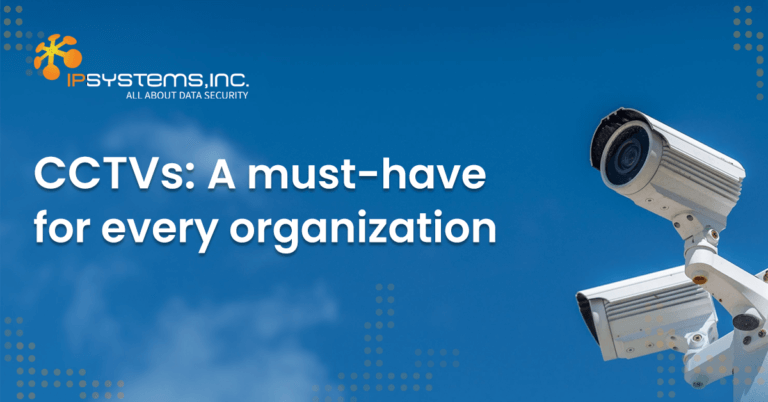
Innovating your Business with Green Data Centers
Blog: Innovating your Business with Green Data Centers Data centers are centralized facilities equipped with essential hardware like servers, storage devices, and networking equipment.
In this fast-paced age of technology, it’s easy to overlook things when you’re running a business. Due to our eagerness to keep up with the changing needs of the market, organizations tend to focus on things like which equipment they should use and have, which internet provider to choose, which location to open a new branch next, and more. Decision-makers often focus on expansion plans that, sometimes, they forget to look at the operational side – such as their IT departments.
Now, we don’t mean they neglect their IT departments, what we mean is that they tend to just focus on providing equipment and software that they forget about cables – or cabling in general. For a organization’s equipment to be connected and for it to work efficiently with minimal downtime, business owners should make Structured Cabling one of their priorities.
Structured Cabling is the practice of designing and constructing an organization’s IT infrastructure and network connection. Structured Cabling goes beyond servicing just data centers and endpoints. This project can also include:
Voice and Video Conferencing Systems
Video Surveillance Systems
Building Access Control Systems
Structured Cabling provides an organized and standardized approach to arranging and designing cables. It allows room for flexibility to your IT team to facilitate moves, additions, and other changes to your technology infrastructure.
Though often ignored in favor of its cheaper alternative, which is Point-to-Point Cabling, Structured Cabling ensures that a business’ network operates consistently and gives out a predictable performance.
Point-to-Point (P2P) Cabling is a method that predates Structured Cabling. Compared to Structured Cabling, in P2P, an organization’s equipment is connected directly to a server or switch. It’s essentially just making cables connect from “Point A” to “Point B”; hence the name “Point-to-Point”. Furthermore, P2P Systems make use of simple jump cables which are often intended for organizations that use fewer equipment and process far fewer data. Though cheaper, P2P cannot facilitate upgrades needed for newer technologies. As such, constant re-cabling is needed with P2P to accommodate new additions or changes.
Meanwhile, Structured Cabling has standards that are being followed to ensure that the flow of data, voice, video, and wireless communication is continuous. It makes use of industry standard cables and components. In a cabling system like this, a series of patch panels and trunks are used to create a structure, allowing for endpoint ports to be connected to a patch panel. This patch panel is then connected to another patch panel via a trunk in the Main Distribution Area (MDA). The MDA is the pivotal piece that makes structured cabling far superior compared to P2P as the MDA is what facilitates the flexibility it boasts.
Cybersecurity experts say that one of the weakest links to your data security are your employees. That is why you must empower and engage them to fight threats. You can start by enrolling your employees to cybersecurity courses that will help them identify, avoid, and report attacks.
A Structured Cabling System mitigates the costs of obsolescence. With Structured Cabling designs, your organization can facilitate quick changes on-demand. Not only this, but with the simplicity that Structured Cabling provides, any changes needed costs less as you don’t need to re-cable your entire office.
Structured Cabling provides your office a neat and tidy look. Even though they are hidden, cables in a Structured Cabling design makes them still organized within the walls. And since they are hidden, when someone like a client or a customer appears at the office, they won’t be able to see a mess of cables that connects every equipment in the office.
Large-scale organizations require high bandwidth to process data in their network. A Structured Cabling System uses high-capacity cables that can accommodate data transfer no matter the size. This also ensures that telecommunication systems are running smoothly at high speeds. You don’t have to worry about your bandwidth getting throttled because Structured Cabling leverages the cutting-edge speed and reliability of fiber optic cables.
As was said before, a Structured Cabling System provides flexibility. It can accommodate sudden changes, including unexpected errors. Should a cable start to become faulty, you only need to replace that one cable without having to turn off the whole system to fix it. Downtime is hardly felt with how quick and easy the fix can be.
With its scalability and flexibility, it allows for your IT team to focus on more important things. Additionally, it’s easier to identify problems that arise from common cabling faults with the organized design Structured Cabling provides. This saves your IT team the time and labor in maintaining your IT infrastructure.
Any organization can benefit from a Structured Cabling System. A well-made Structured Cabling System is highly reliable and will stand the test of time. Trends are changing every year, and the best course of action is always to think ahead so your IT infrastructure don’t fall behind.
Want to know more about Structured Cabling? Talk to one of our experts today – FOR FREE! Contact us at +63 (2) 8638 – 3264 or send an email to [email protected].



Blog: Innovating your Business with Green Data Centers Data centers are centralized facilities equipped with essential hardware like servers, storage devices, and networking equipment.

Blog: CCTVs: A must-have for every organization Nearly every business and organization, regardless of size, has already implemented CCTV Services within their premises because

Blog: Combating Bullying in Digital Classrooms: Empowering Students for a Safer Learning Environment Bullying is a pervasive issue that inflicts emotional, psychological, and physical

Established in 2007, IPSYSTEMS, Inc. is a trusted and valued cybersecurity and IT distributor in the Philippines. It has solutions specifically focused on IT Infrastructure Security, Secure Remote Access and Monitoring, and Email and Data Security.